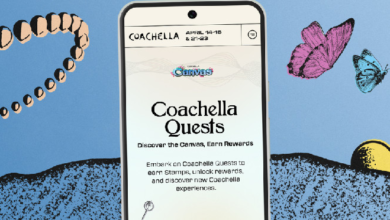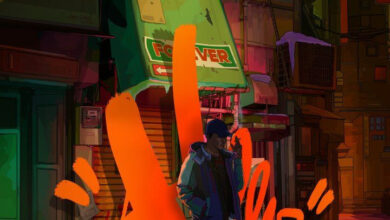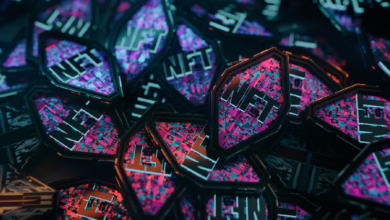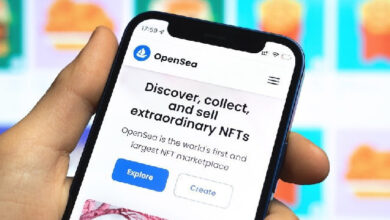Taking Photos and Minting NFTs at the Ends of the Earth, With FOTO’s John Knopf
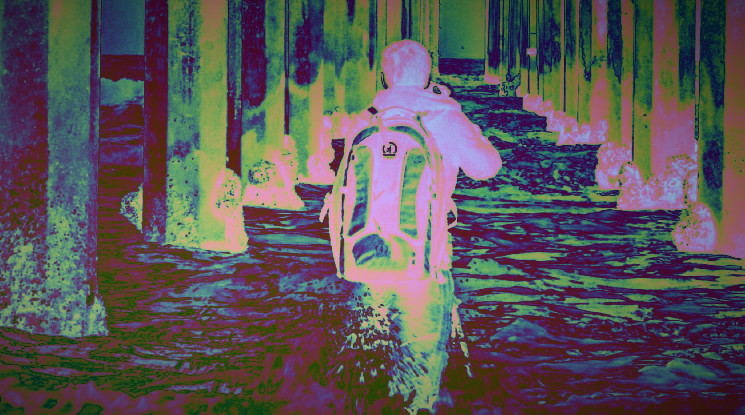
NFT
Good photography often requires as much technical skill as artistic sensibility, making it uniquely fit for experimentation in Web3. Yet, talk to any non-fungible token (NFT) collector or creator and they’ll say it took a while for “photography NFTs” to take off.
John Knopf, an Emmy Award-nominated landscape photographer who works for National Geographic, was an early adopter. While he came into crypto during the heady days of the NFT bull market thinking he could make a “quick buck,” he said, he quickly became enthralled with the potential of distributed networks. This article is part of CoinDesk’s “Culture Week.”
“Web3 is all about elevating one another and working to advance the art form,” Knopf said. Together with seven other prominent photographers – Alejandro Cartagena, Ben Strauss, Cath Simard, Dave Krugman, Isaac “Drift” Wright, J.N. Silva and Ravi Vora – Knopf helped found FOTO, a collective geared at training artists to work in Web3.
FOTO boasts hundreds of members of amateur and professional artists today. Knopf curates members’ art to exhibit at sponsored galleries and events. The idea is to elevate digital art, Knopf said, adding he makes “no money from the artists whether their work sells or not.” In 2021, Time magazine partnered with FOTO on its own NFT drops. Knopf’s work has also been featured by Red Bull, USA Today, Billboard Magazine and Google.
See also: Better Policy Can Turn NFTs Into an Intellectual Property Powerhouse
A self-taught photographer, psychonaut and fun-loving guy, Knopf will be speaking at CoinDesk’s Consensus this year in Austin, Texas. We reached out to him ahead of the event to hear his thoughts on the NFT bear market, pricing artwork and the early days of the Bored Ape community. The conversation has been lightly edited.
What do you think has changed most about the crypto conference circus during the bear market?
I’ve spoken at Art Basel along with NFT NYC and will be speaking at the upcoming NFC Summit in Portugal. To be honest, things have become more cutthroat, especially considering the trading aspects of everything; a lot has changed. Conferences had better vibes and art. Now it’s more focused on trading.
Cutthroat is kind of an interesting phrase. Is that how you’d describe the NFT market now?
Yeah, I mean, when liquidity dries up and there’s blood in the water, everyone’s just kind of at each other trying to get what they can while they still can.
Speaking of – let’s call it – luck, isn’t there a story about you selling a BAYC NFT and profiting over $1 million?
Yeah, it’s an insane story. You have like 10 minutes?
If you do.
So when I first got into Bored Apes, I minted 13 originally one night when they first came out, and I got one with a spaceship, pipe and laser eyes, and I held onto him because I really wanted a lot of money because I knew it was rare and I liked it a lot.
One night I was at a furniture store with my wife and I got $1 million transferred to my Ledger out of nowhere and an email that said, I just sent you 230 ETH [ether] by accident. I immediately called Keith Grossman [former Time president, now at Moonpay] and said, “Someone just sent me a million dollars. What do I do?” And he said, “Don’t respond to them. We’ll contact your attorney. We’ll figure it out on Monday,” because it was a weekend.
I figured, it’s Web3. I’m gonna hit this guy up at 1 a.m. and see exactly why this guy did what he did. I found him on Twitter, and DMed him and I said, “Hey, man, you just sent me a million dollars, like, what’s going on?” And he responds: “I wanted to buy your Space Ape, and made you an offer. Since you didn’t accept it, I meant to retract the bid and send the ETH back to myself but had your ETH address copied and accidentally pasted that instead of my own.”
Apparently, Deepak, the buyer was doing these transactions on his phone, which sort of explains the mistake.
We both laughed, and I said, “That’s probably the dumbest mistake I’ve ever heard of. But you know, I’m gonna send it back to you, obviously, I just wanted to confirm this wasn’t a wash trade.” It seemed shady. So I said, “It looks like you want my Space Ape so why don’t we work out a deal, what do you want for it?” And he said, “230 ETH, my original offer.” I responded, basically, “I need life-changing money for him.”
See also: Why NFT Artists Shouldn’t Expect ‘Royalties’ | Opinion
So we agreed on 347 ETH, which was $1.420 million, for the culture. He then proceeded to make me an offer for 347 ETH on OpenSea, which I accepted, and then returned his original 230 ETH I still had in my wallet. A month later he returned and bought both the Space Ape’s mutants derivatives for 230 ETH.”
It’s hard to imagine someone so flush with cash to send $1 million on spec.
It’s one of those moments in crypto history. We ultimately agreed on a $1.42 million sale price, and then he bought [Bored Ape] Mutants for another million dollars so the total sale ended up being around $2.5 million.
Are you still involved in the Bored Ape scene?
No, not really. I mean, originally I kind of helped them in the market in the beginning – going back to the time when everyone was on Clubhouse. Me and Farokh [a popular Web3 podcaster and Knopf’s co-founder for Rug Radio] would talk about the Apes and, you know, brigade different rooms. That’s kind of how the market started with Apes – we would raid rooms and show off our NFTs. Gary Vee didn’t know about them – nobody knew about them – before we raided their rooms on Clubhouse, and they would be like, what are these stupid Apes?
Are you at all surprised with how successful BAYC has become? Yuga Labs is probably the most important company in NFTs today.
It’s funny, I remember when you couldn’t even trade an Ape for a Punk [editor’s note: short for CryptoPunk, the first NFT series created in 2017, which became highly desirable digital assets as the NFT bubble crested]. Six months into it, I remember the Punk community saying, “Well, I guess Apes could be a community but they gotta kind of work on it.” Like they were laughing at us.
So to see the collabs now – and when Yuga bought out the entire Punk IP – it was pretty incredible to watch.
Yeah. Who knew ape cartoons could be so valuable? Could still be so valuable.
Yeah, they’re killing it. Not to denigrate – the agents are killing – but luck was a major factor in their situation.
Have these digital communities, NFT communities changed?
Originally I think it was all about, like, the art and the good vibes and everything. I think now that we’re in a bear market, liquidity has dried up so everyone’s going at each other and attacking each other. It’s a little scary out there, a little toxic. But that happens with any community. Like, I grew up in the Rave scene – it was a similar situation where it started off as this whole Respect, Unity, Love thing. We’re in this interim moment, figuring out where we’re going to end up.
I also created a Web3 photo community. I love those people. Everybody involved in our photo community is just incredible. It really goes to show what this technology can offer. I grew up as a photographer not really knowing a lot of other photographers out there. And then the Instagram photography community was just competitive – everyone scrambling for likes. Web3 is all about elevating one another and working to advance the art form.
What are the guiding principles of FOTO?
The idea is, it’s a mix of artists – some well-known, a bunch who are completely unknown – who are all peers, all equal within our community. We all work together. We all pitch in and try to create events. We do galleries.
Photography always seemed like such a perfect blend between artistic sensibility and technology. It makes sense for photographers to find their way to crypto.
Funny story: Also, like, two years ago during the [COVID-19] pandemic, my friends and I were on Clubhouse trolling people. We’d make Flat Earth rooms, Scientology rooms, stuff like that. One night I stumble into an NFT photography room with five or 10 photographers in there, basically debating whether or not photography would even work on the blockchain. People were convinced that an NFT would have to be 3D art or we’d have to animate our photography. It hit me – I can’t animate my photography; I’m good at what I do, but I can’t do that – that this was an opportunity to dive in while everyone else was holding back. I was just going to do what I‘ve always done, taking photos and setting prices I believe they’re worth.
I’ve always been curious about how photographers price their work. The material inputs – camera and equipment – are expensive but the art objects are infinitely scalable.
I’ll give you an example: My first trip to Hawaii early in my career, like 12 years ago. I paid for the trip myself. It cost me around $15,000 – a lot of money for me back then. I was basically camping on the beach to eat and survive, but I stayed there for months and it cost me a fortune to be able to do that. So there’s the cameras, the equipment and paying for an experience worth documenting. And I take my time into account. But mostly what I look at when I price my work is not necessarily what goes into it but the expertise of being a craftsman. The costs are all mixed into one price point but I always think whether I would regret the sale 10 years down the line.
I underpriced some of my best work that I can’t reshoot. I went back to Hawaii about a month ago and found that about 60% of my shots 10 years ago could not be reshot today – like, the rainbow eucalyptus trees have been destroyed and the vantage points for a lot of shots were gone. So it’s not just about the time that you put into it but the fact that you’re capturing a moment in history that will never ever be captured again. So you have to price your work accordingly.
With NFTs, it’s different from traditional art or traditional photography. You do editions, you rarely do one-of-ones. Famous photographers can sell a single shot for millions of dollars because it’s a one-of-one and they can’t sell 500 editions to make their entire budget back. I’m not used to doing a one-of-one sale, so when I’m pricing my art it’s like I have to remember that in 10 years from now I don’t want to regret what I’m doing now.
Heavy. Do you think you might come to regret crypto?
When I first entered the NFT scene I thought it’d be a great cash grab to make some money really fast while it was going because no one knew how long it would last. After about two weeks of sitting with the community, talking to people, I realized I had a much larger place here because of my background. You know, I had two galleries that I opened myself because galleries wouldn’t take my art – I literally lived out of my car to open my first gallery. So my conviction in my art is a lot higher. When I finally understood the technology behind crypto, what the blockchain will do for the future, especially future generations of artists, I went in full speed.
I have a very long-term vision. You know, as artists we’ve been sold the idea that exposure is going to pay our bills. We’ve been told, if this was in your portfolio you’ll get that bigger job. And so on. It’s always been exposure, exposure, exposure – very rarely are we valued. Web3 is a place where we can set the market for ourselves, for future generations.
Do you think NFTs has made an indent on the traditional art scene?
It’s huge right now! We’re seeing kids come into the space like Nyla Hayes, a 12-year-old artist who made $8 million for her family [Knopf helped advise her “Long Neckies” project]. Richard Zheng is a 15-year-old photographer who has made enough ETH to pay his mom’s mortgage. He’s one of my employees for the FOTO galleries; he designs all the templates. So it’s an opportunity for not just adults but really anyone. If I had this opportunity as a teen I don’t want to know how much further along my career would be. The community and the culture is what’s proving stronger than the monetary value.
See also: The Art World Underestimates the Power of NFTs | OpinionI like to compare the early internet community to crypto. Do you have an “aha moment” of being online?
I’ve been online since probably 1995. I was like an early user of Prodigy [a computer program that predates the World Wide Web]. But actually, my aha moment about tech was when crypto came out. In 2011, when I won my first StarCraft competition, I was paid in bitcoin and was able to go to the Silk Road and buy something and realized, wow, this is a really cool opportunity for us. It was the first time I bought acid.
That stuff seems to be popular in tech. Do you do a lot of psychedelics?
Another funny story: I hadn’t done psychedelics in a decade but the night I minted Bored Apes, the only reason I minted them was because I was on mushrooms and, well – I thought it was the stupidest art I’d ever seen. I love art. This is not art. But on mushrooms, I was like, these are insane! I used my wedding money – my wife almost left me.
I can keep this out of the piece if you prefer. It is funny.
It’s hilarious. I tell the story all the time.
Any closing thoughts?
I have to say something about the photography community – the reason why photography has become more and more dominant in the Web3 art scene is because there’s a community that has rallied behind it. I compare it to the 3D and animated art communities. You look at any of the other communities and there’s just not the same cultural force. With crypto it feels like we all rise together. We all win when anyone wins.


